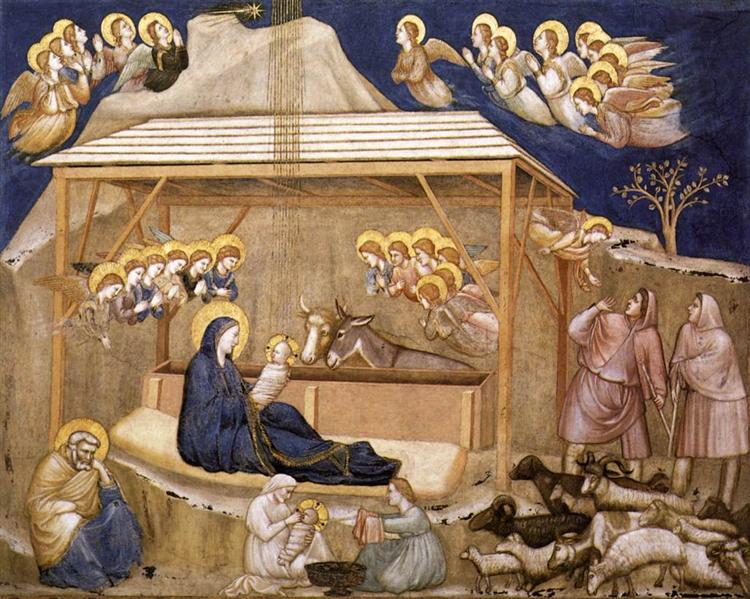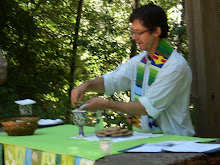
Thirty
years ago next month, I went to live at a sort of New Age commune in
Massachusetts, where I worked on the construction of a new community center
building in exchange for a bed in a dormitory and all the vegetarian food I
could eat. In the original house that
came with the property there was an upstairs room that had been set aside for
meditation, and it was there that I first began a daily practice of sitting
down for a half hour before and after work to be silent and still. And tonight I’m remembering one evening in
that room when I experienced a kind of release in my breathing, an opening that
began in my sternum and spread of the back side of my rib cage into my abdomen,
an expansion of my body and my mind.
And
afterward, as I walked out into the summer evening, down the country road to
the neighbor’s house where the community dinner was happening that night,
savoring the soft light and the sweet air, a thought came to me about air,
about oxygen and the gases that I was breathing in and out—the thought that had
also breathed. Over the course of his
lifetime, he breathed in and out countless atoms of this same atmosphere. And have been dispersed by the ceaseless
circulation of the elements, and mixed throughout the living system of the
earth, so that it seemed likely to me in that moment that every breath I tooked
must contain at least one atom that had also been breathed by Jesus.
Of
course, I could have reasonably said as much about every other person, even
every other creature, that has ever lived.
But in that moment it was the thought of sharing the breath of Jesus, that
filled me with a sense of wonder, and quiet joy, and peace. Which was strange, because I didn’t think of
myself, then, as a Christian. Now that
I’ve attended church for twenty years, and been baptized, and graduated seminary
and been ordained a priest, I can interpret that evening’s experience using theological
language that wasn’t available to me at the time. But I can’t improve on the freshness of that
intuition, spontaneously arising from the life of my body, and what it said to
me about Jesus.
His
was the life of a human body, in common with everyone on earth. He breathed the same air, and ate the same
food, the same blood ran in his veins, the same pains of mortality shadowed his
days. And yet there was something about
his particular body, which transformed the very substance of this world. By entering into it, taking it into himself,
giving it back again to the shared matrix of life, he charged every aspect of
earthly existence with new power and meaning.
And to those with the heart to receive it as a gift from God through him,
he gave the world divinity. This giving
began at Christmas, on the night that Jesus took his first breath.
This
makes Christmas different from the other birthdays of important people we
commemorate on the calendar. In no other
case do we say that their births were, in and of themselves, significant. On January 15th, for example, we
do not gather to tell the story that begins, “When Calvin Coolidge was
President, and Dr. L. G. Hardman was governor of Georgia, at the family home in
Atlanta, Alberta King gave birth to her middle child, a son.” We don’t do that, because to our minds there
wasn’t anything particular extraordinary about the birth of Martin Luther King, Jr. Whatever importance it has derives from the
achievements of his later life, when he became a man.
But the
Gospel of Luke, which we hear tonight, and the Gospel of Matthew, which has a
different version, tell stories that are full of the conviction that even the birth of Jesus was extraordinary. Not that that Jesus himself did anything
unusual. He was simply born, as we all
were born: he took his first breath; no doubt he cried. Maybe he lay on his mother’s breast and tried
to nurse. She swaddled him tightly in a
blanket and he slept. Jesus’ birth was
not significant because of anything he exceptional he did, but because of who
he was. His mere existence was already a
gift to the world, and a gift does not become a gift because of anything the
gift does. It is a gift because of the
intent of the one who gives it.
And also because someone receives it. The climax of Luke’s Christmas gospel is the
angel’s promise to the shepherds that if they go to Bethlehem they will see a
sign, a sign confirming angel’s good news about the birth of the Messiah, about
peace on earth and God’s favor to all.
Tonight we didn’t go on to read the rest of the story, which talks about
how the proclamation of the angels was received: how the shepherds did go and
did find the baby lying in the manger; and how they told everyone what they had
heard concerning the child, and went away praising and glorifying God; and how Mary
took in everything the shepherds said, and treasured their words in her heart.
For
those shepherds the infant was the sign of God’s gift of life and love to the
world, and they received the gift. And
this giving and receiving is the whole driving force of the gospel. When Jesus heals the sick, he tells them that
it is their faith in God that has made them well. When he preaches the kingdom of heaven, he
says, “let those who have ears to hear, listen.” The words he spoke were the words of life,
and yet he never wrote them down. He
gave them away, like seeds scattered on the ground; it was the people who
received them, that remembered them, and told them to others, while others
remembered other things he said, and passed them on, and it is only through
this kind of crowdsourced transmission that we know anything about him at
all.
The
most significant of all his words, judging by the frequency and devotion with
which they are repeated, are the ones he said on the night before he was handed
over to be killed, when he took bread and said, “this is my body, given for
you.” And he took wine and said, “this
cup is my blood, poured out for you.” They
are words that are fulfilled when human beings take the substance of the earth—in
bread, in wine—and share it as the gift
of God to them. Eating and drinking
together, they receive the life that was in Jesus. They take it into themselves and they become
what Jesus was in the substance of his being, from the moment of his birth: the
gift of God to the world.
This
transformation is not something we can achieve by willing it to be so—we cannot
even conceive how it happens. We may not
even notice until we have been eating this meal regularly, week after week, and
year and year, for a long time, how it is changing us—making us less anxious
about life, less fearful of death, more inclined to forgive and to ask for
forgiveness, to be generous and caring toward others, more open to the
promptings of the Spirit in our hearts, more entranced with the richness and
the sweetness and the simplicity of the journey into God.
The
gift of Christmas comes with such a simple sign—a newborn baby wrapped in bands
of cloth and lying in a manger. This simplicity
makes it possible for anyone to receive it: even if we lack the means to
decorate our home with a fragrant tree and shining lights and presents in
colorful wrappings, even if we don’t have any home at all; even if there is no
rich food and drink on our table, or any friends or family to gather around it;
even if there is a chair at the table for the person dearest to us in the world
sitting empty. Every year, as the first,
imperceptible turning of the earth toward the sun takes place, we come to this
sign. It reminds us that the gift of the
presence of God is always new, always fresh, always available for those who
care to listen--as soft, and quiet, and constant, as the breathing of a
new-born child.

